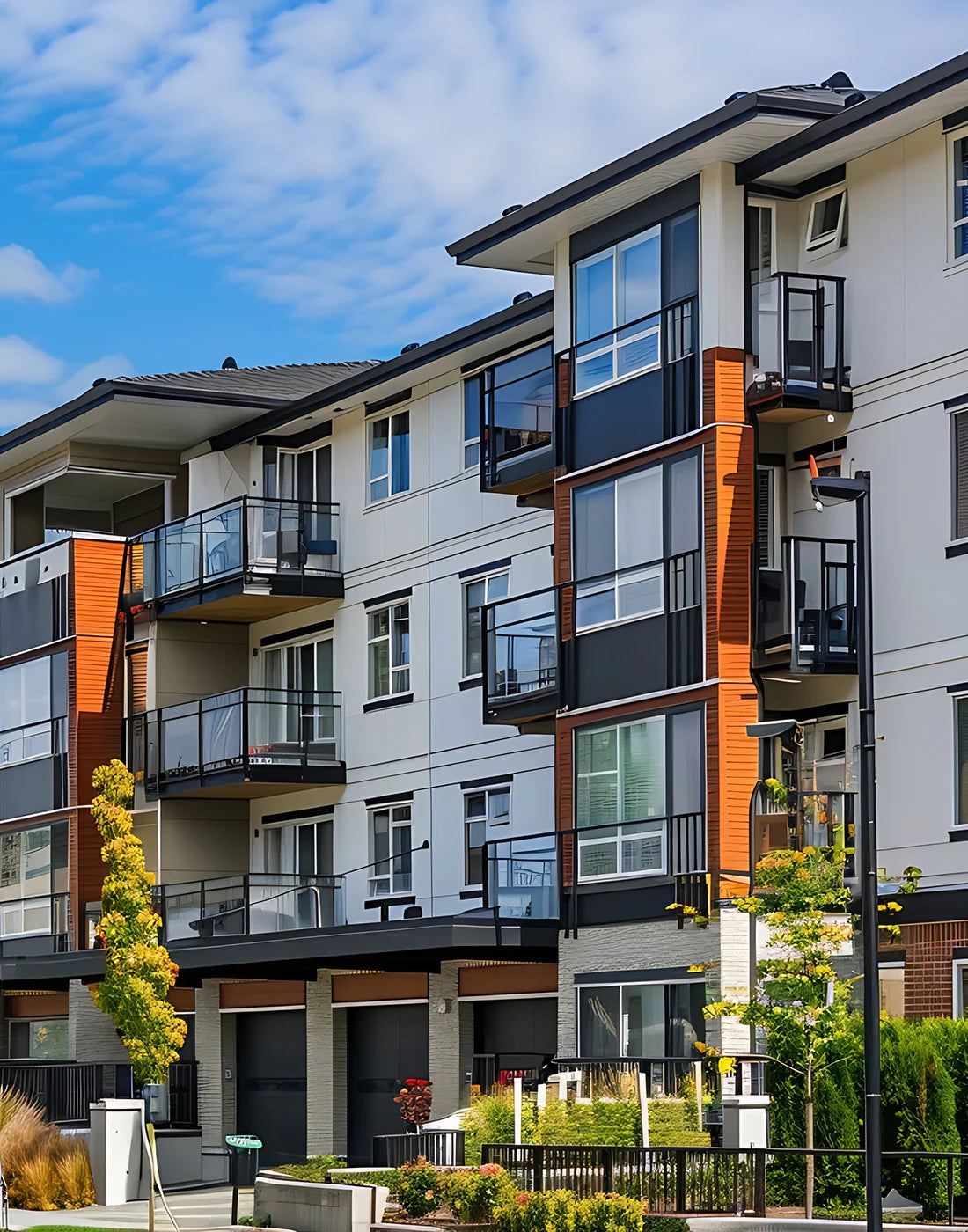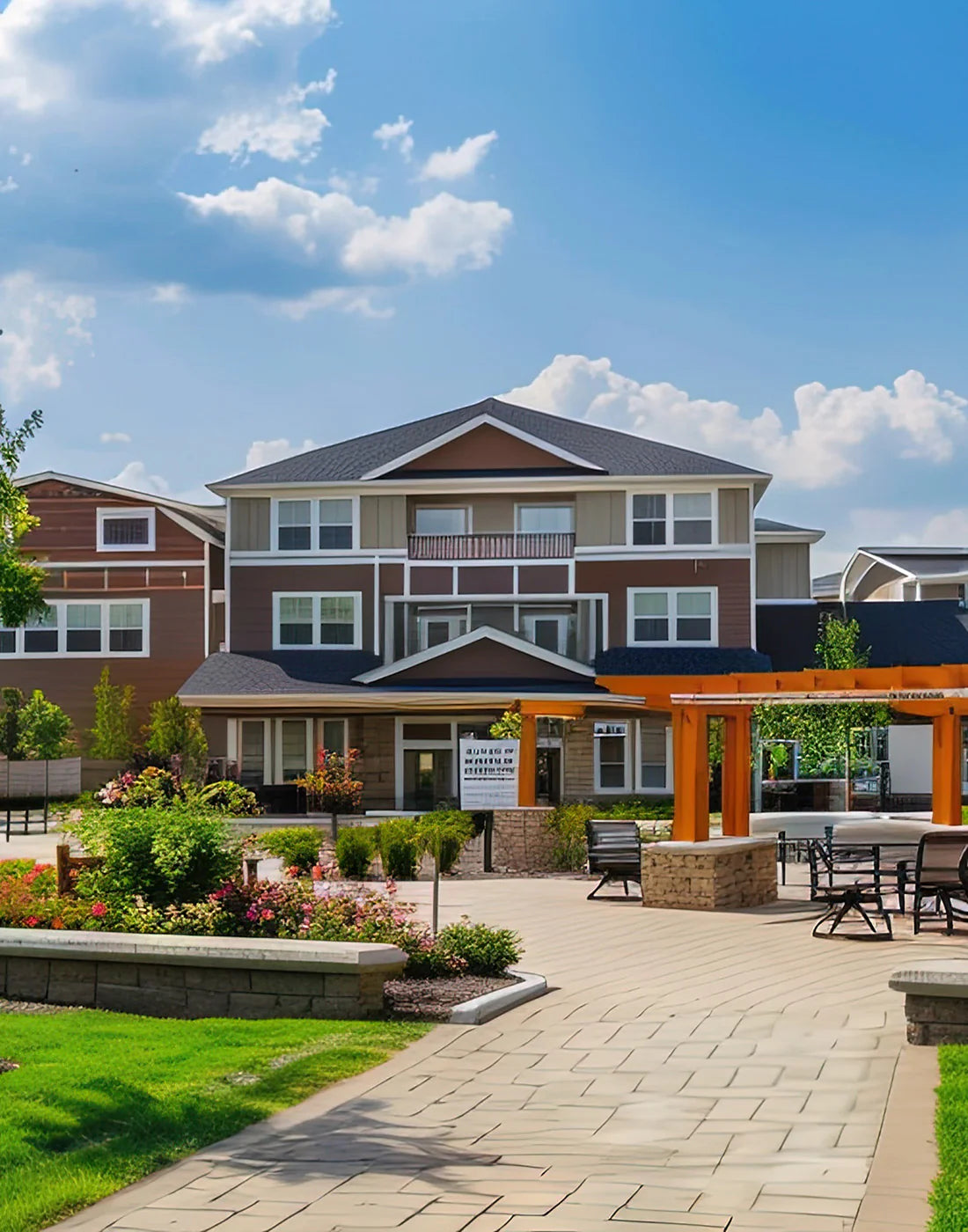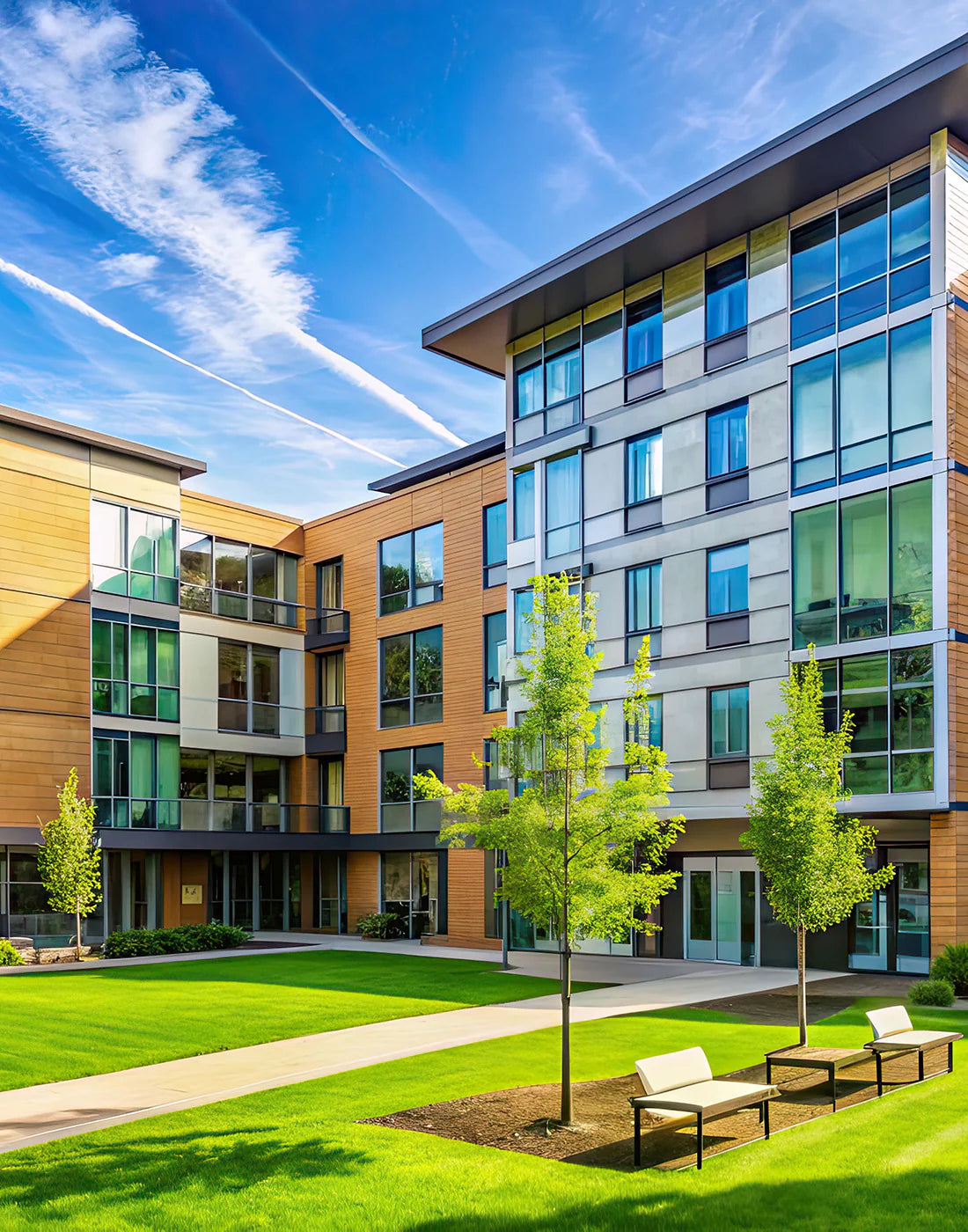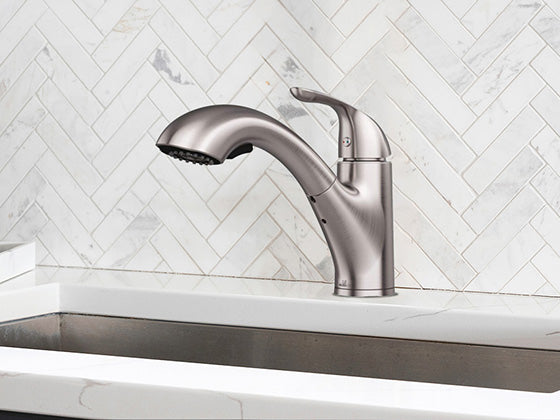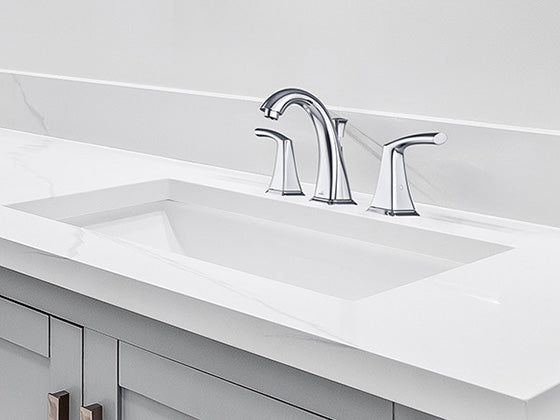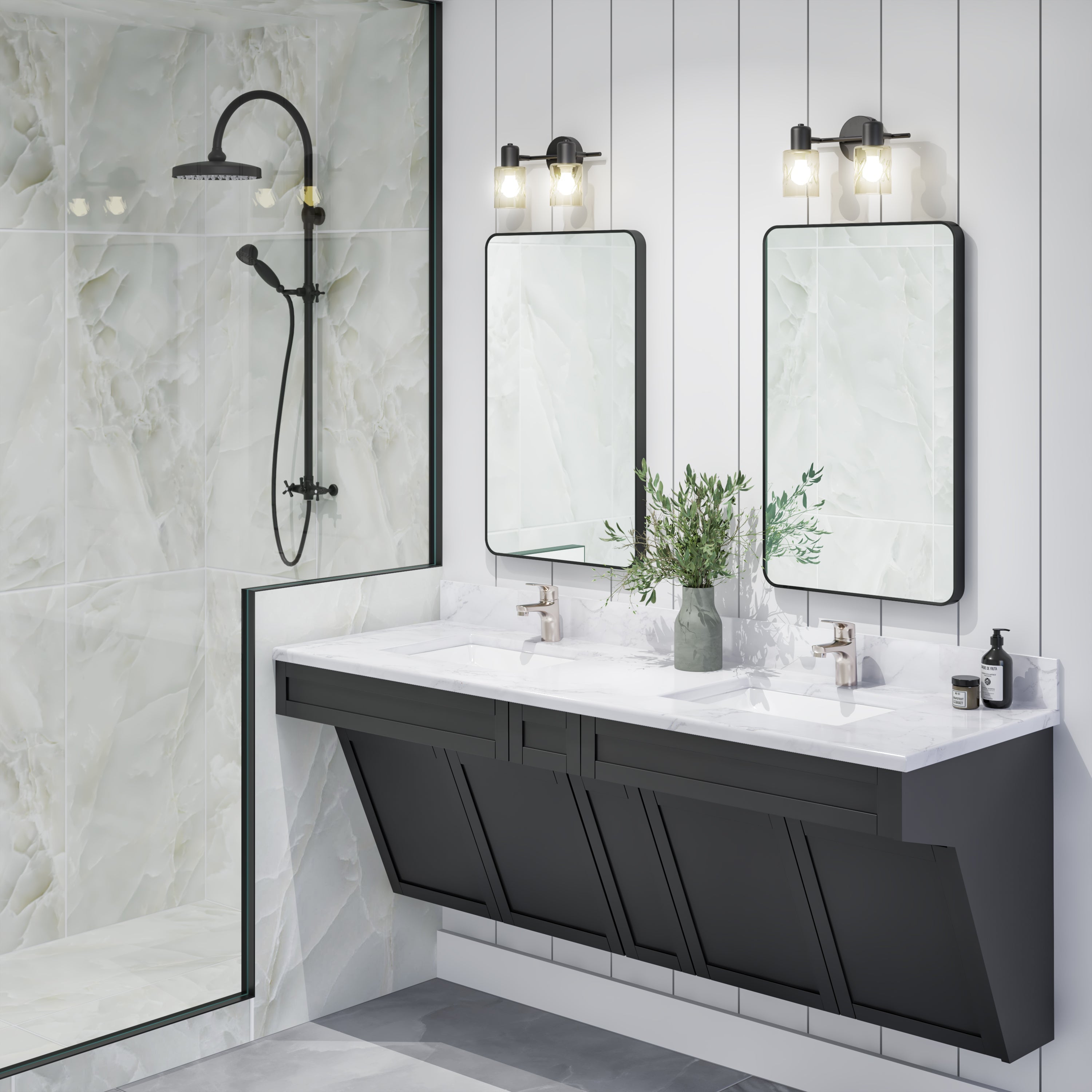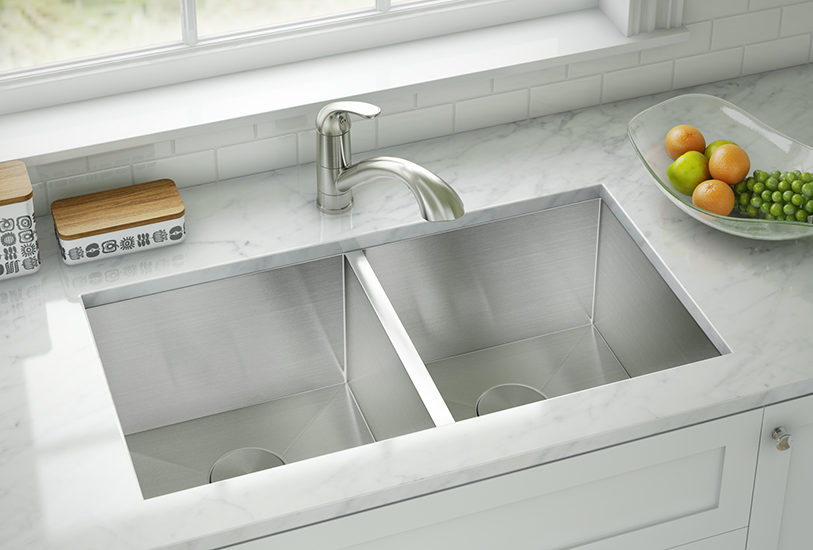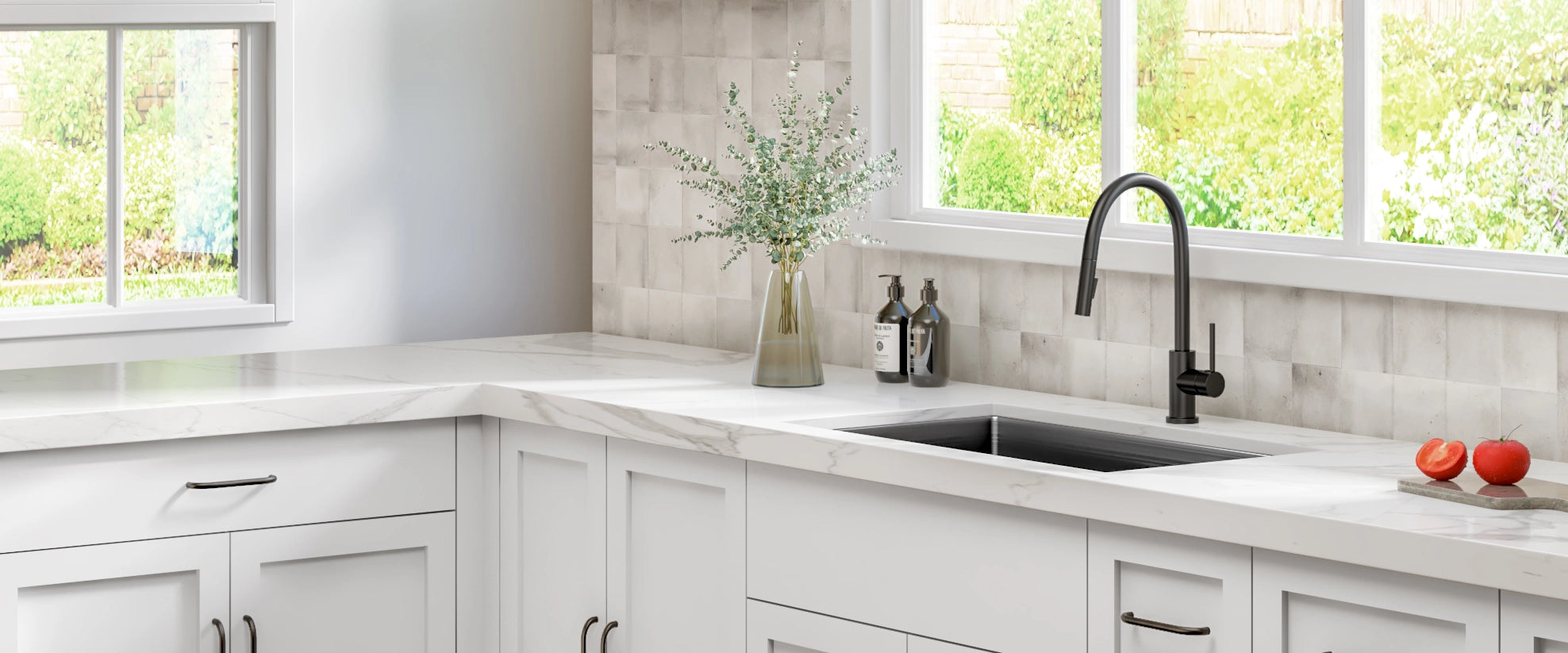ADA friendly homes aren’t just a compliance issue any more.
Rising home prices paired with an aging population means more elderly people are moving into multifamily buildings.
Now more than ever, builders can stand out to this aging population of home buyers by offering key accessibility features, many of which are covered under ADA kitchen design guidelines.
Most multifamily residential builds need to include several ADA units to comply with regulations.
But finding ADA-compliant fixtures can be frustrating, time consuming, and expensive.
Let’s make it easy on you! Here are the 5 main things to look for in an ADA faucet for kitchens and bathrooms.
1. Easy to Turn On and Off


Why
Many people with disabilities can’t apply much pressure when they’re operating a faucet. That may be because of upper limb weakness, limited dexterity, or because it’s hard to get enough leverage from a seated position such as in a wheelchair.
Exact Specs
ADA faucet guidelines require faucets that:
- Can be operated with less than 5 lbs of pressure
- Don’t require twisting, pinching, or tight gripping.
What to Look For in a Faucet
Most new faucets with lever-style controls should fit the bill.
Not knobs, because they are harder to grasp, harder to turn on or off, and harder to clean. Especially for people with disabilities like arthritis.
2. Can Be Operated With One Hand

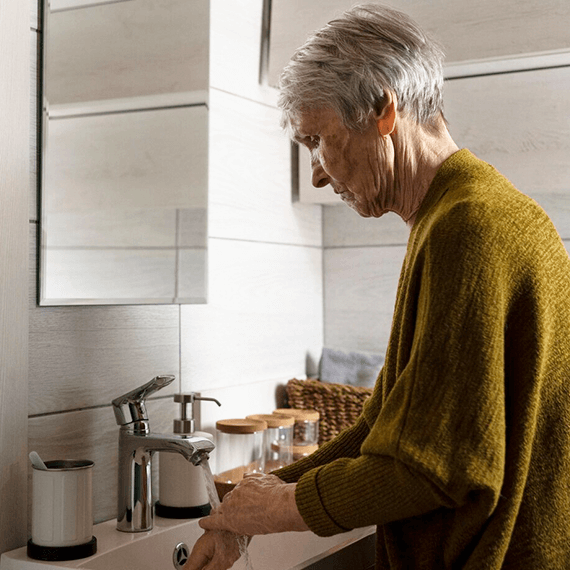
Why
People with disabilities may only have one operable arm. For example, elderly people who have had a stroke may lose the use of one side of their body.
And people who use a wheelchair may need to brace themselves with one hand while they lean to reach the sink controls with the other. Homeowners with balance issues may also need to keep one hand on a cane or walker to prevent falls while reaching for the faucet.
Exact Specs
ADA guidelines for kitchen faucets specifically state that the water flow should be able to be activated using one hand.
What to Look For in a Faucet
Look for single-handle faucets for ADA kitchens whenever possible.
Double handle faucets can technically be used with one hand, but reaching across a wide set faucet to turn on both knobs can be awkward. Plus, reaching across the body may involve a twisting motion that’s difficult.
3. Sits at the Right Height and Distance from the Edge of the Countertop
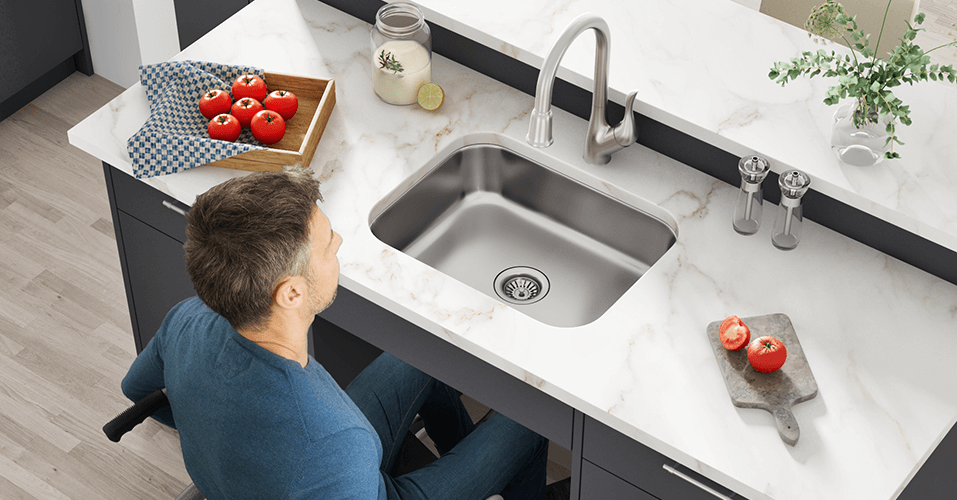
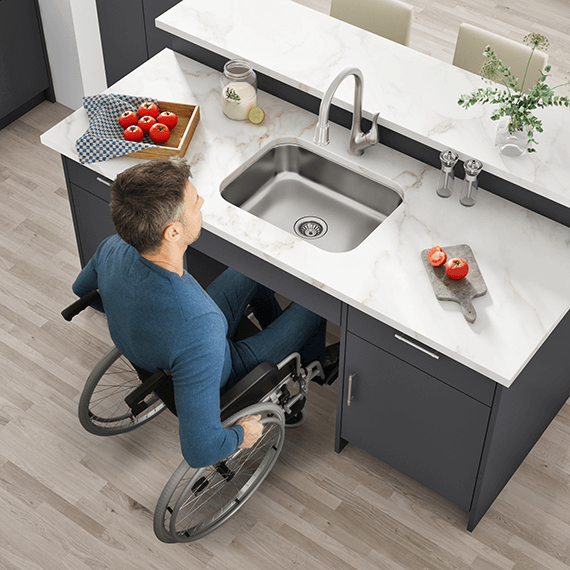
Why
Everything in an ADA kitchen design needs to be accessible from a seated position. That includes the outlets, stovetop controls, and of course the ADA kitchen faucet.
For people who use a wheelchair or can’t stand for long periods while cooking or washing up, fixtures that are too high will be out of reach.
Just as important, if the fixture is too far from the edge of the countertop, they won’t be able to lean far enough to reach it.
Exact Specs
ADA kitchen faucets should be:
- 48” or less from the finished floor
- 25” or less from the edge of the countertop
What to Look For in a Faucet
As long as the ADA sink basin was installed correctly, a standard deck mounted faucet should be ok.
Designs like wall-mounted faucets and vessel sinks may put the controls too far from the edge of the countertop, or too high to reach from a wheelchair.
If you’re going with an undermount basin, be sure you keep the faucet position in mind when you’re preparing the countertops.
4. Keeps Knee Area Clear
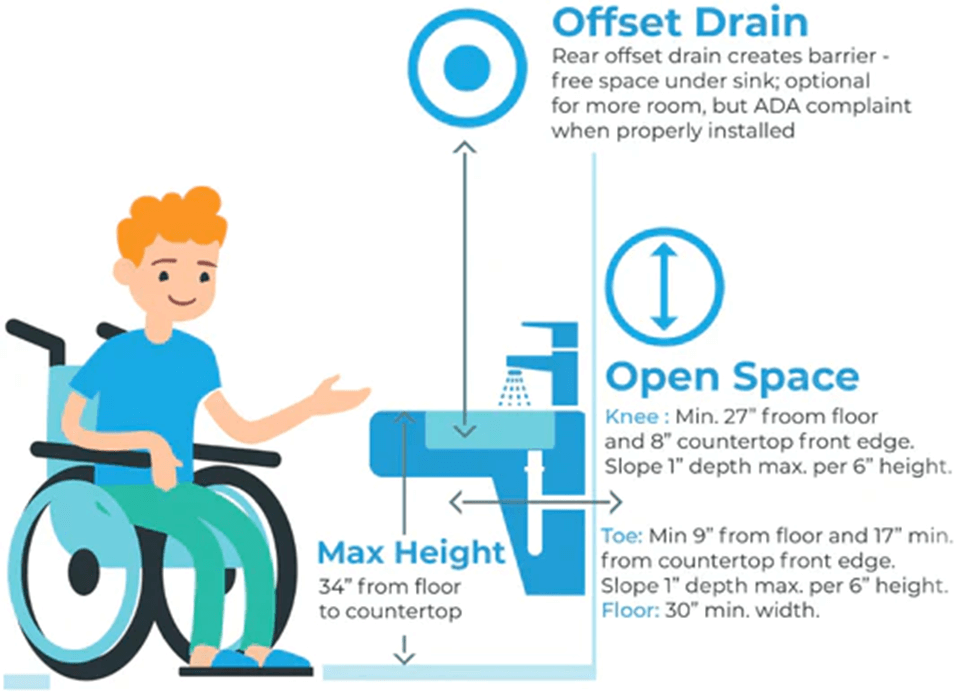
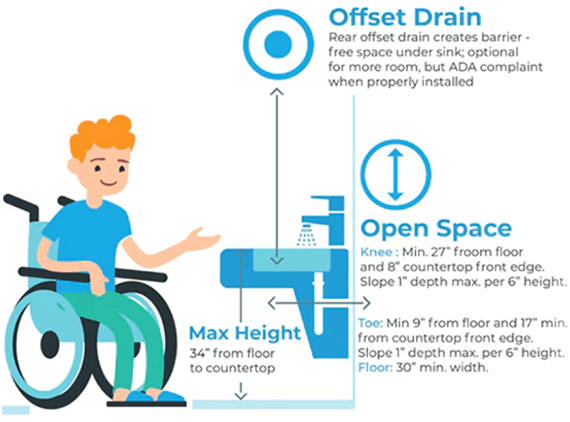
Why
One of the most important features of an ADA sink is that a person who uses a wheelchair can pull all the way up to the sink and use it while seated.
That means there needs to be enough space under the sink for their legs to fit comfortably without running into pipes or supply lines.
Exact Specs
ADA kitchen and bathroom sinks need the following space clear for knees and toes:
Designs like wall-mounted faucets and vessel sinks may put the controls too far from the edge of the countertop, or too high to reach from a wheelchair.
If you’re going with an undermount basin, be sure you keep the faucet position in mind when you’re preparing the countertops.
For full details on creating an ADA bathroom sink, check out ourcomprehensive guide to ADA bathroom design.For ADA kitchen sink specs, ourcomprehensive guide to ADA kitchen designis worth checking out.
What to Look For in a Faucet
Supply lines, pipes, and hardware all need to be completely clear of the knee and toe space.
Also, any bolts, sharp edges, or lines that may become hot need to be covered or insulated to prevent scrapes and burns.
If you decide to go with a touchless or touch-activated faucet that needs an electrical supply, you’ll also need to make sure the cords are properly secured to stay out of the way.
5. Automatic Faucet Doesn’t Shut Off Too Fast
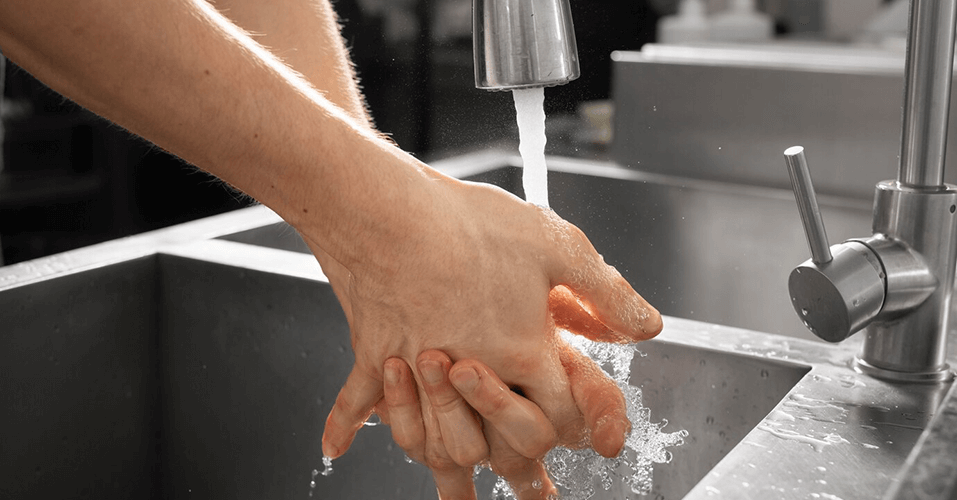
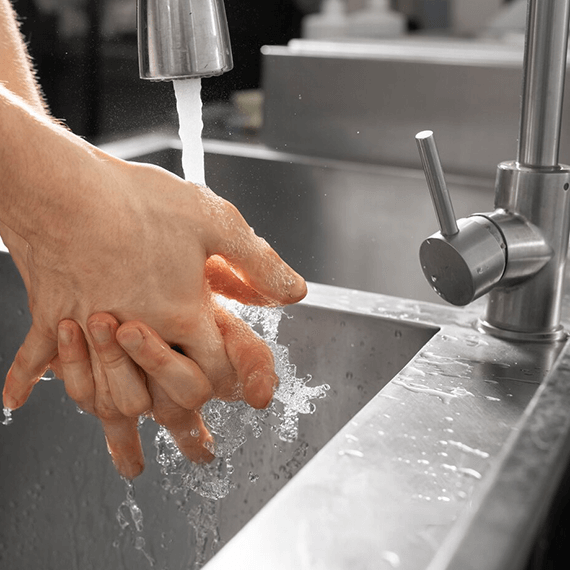
Why
Speaking of automatic faucets, they need to run long enough to be usable for people with disabilities.
Some types of disability make it difficult to move fast. So faucets that shut off automatically need to run long enough to give the user time to position their hands and rinse thoroughly.
Exact Specs
Automatic faucets must run for at least 10 seconds according to ADA regulations.
What to Look For in a Faucet
Easy solution? Choose a manual faucet!
They’re affordable, easy to maintain, and don’t cause frustration when sensitive parts like motion sensors break down.
Not adapting to the latest technology sounds unorthodox, but most residential builds don’t need automatic faucets.
This requirement is more aimed at commercial buildings and public restrooms. They’re expensive, hard to install, and most homeowners don’t want them anyway.
If you’re working on a custom build and your client specifically wants an automatic faucet, just be sure to check with the supplier about how long the faucet will run, or how you can adjust it.
Best Choice Should Blend with the Rest of the Property

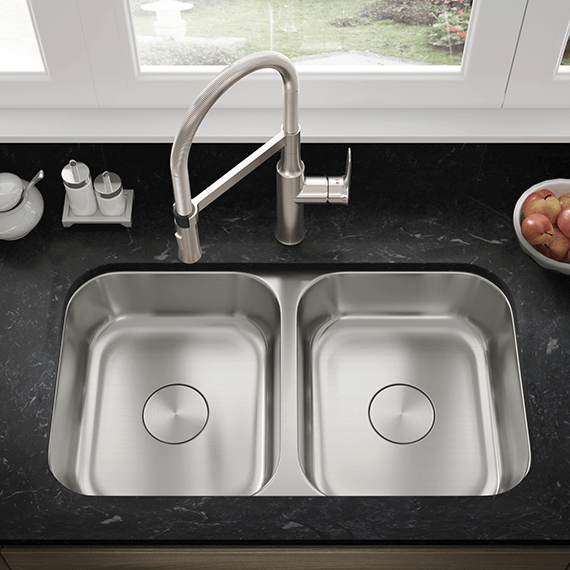
Taking all that into account, we recommend:
- Single-handle faucets
- Lever-style controls
- Deck mounted designs
- Integrated sprayers that are easy to reach
For kitchens, Allora USA’s model A-710 is a perfect fit with a classic look.
For a more contemporary look, model A-200 in stainless steel is another great option.
For bathrooms, model A-6550 in brushed nickel is a gorgeous faucet that’s accessible for people with disabilities.
For a modern bathroom aesthetic, model A-7005 is a perfect fit.
Multifamily projects should have a uniform look from unit to unit.
That’s why we’re proud to offer options for standard and ADA kitchens and bathrooms. So you can get everything you need in one place for beautiful results on every build.





